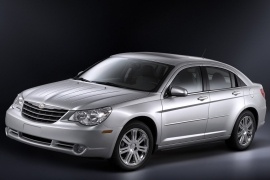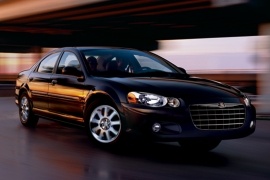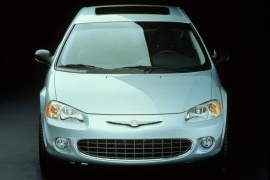CHRYSLER Sebring Sedan Models/Series Timeline, Specifications & Photos
First production year: 2001
Engines: Gasoline, Diesel
Chrysler introduced the 2007 Sebring and hoped to dominate the mid-size sedan market on both sides of the Atlantic and in Asia, but the world financial crisis shattered the American carmaker's dreams.
Inspired by the former Vaillant designed by no other than Virgil Exner and with shapes carried over from the 2003 Chrysler Airflite concept car, the 2007 Sebring was built on top of a new front-wheel-drive platform shared with the Dodge Avenger. In the U.S., the Sebring managed to sell less than 250,00 units in five years, forcing Chrysler to pull the plug on this model.
Sharing its styling with the Chrysler Crossfire sports car, the Sebring featured a front fascia with a quad headlamp design and a chromed grille. The multi-channeled hood accent lines and the in-your-face Chrysler wide-style badge stood proud in front of the vehicle. On the profile, the ascending sculptured lines on the door panels also resembled the sporty coupe of the carmaker, while at the back, the wide taillights that crossed the rear quarter panels onto the trunk lid looked less provocative than the rest of the car.
The interior was crafted with great care but with low-quality materials for the lower trim level. Even the top-spec grade, named Limited, wasn't something special. But the infotainment system was great for those times, sporting a 6.5" touch-screen, a 20Gb hard drive for music and photos, and USB connectivity.
Under the hood, the Sebring sported a 2.4-liter gasoline engine that was available worldwide paired as standard to a five-speed manual. The U.S. customers also got access to a 2.7- and a 3.5-liter V6, while the Europeans could opt for a VW-sourced 2.0-liter TDI engine.
Developed for both sides of the Atlantic, the second generation of Chrysler Sebring was a mid-size sedan. It was fit for five adults and it offered decent powertrains.
The first generation of the Sebring was a joint-venture development program with Mitsubishi Motors. That lineup was not so well received by the customers, so the second generation was based on an entirely new platform, named JR for the sedan. The coupe version was still shared its components with the Japanese car-maker.
Its styling was new and bold for a conservative brand such as Chrysler. The narrow front end and the swept headlights were a promise for a dynamic vehicle. It was in the same category as the Honda Accord, but it sat lower and it was offered with more powerful engines.
Depending on the trim level, the Sebring featured remote keyless entry, leather-faced eight-way power driver’s seat, special “touring” suspension, and a traveler’s display, installed at the top of the center stack. That LCD included a compass, outside temperature, and trip computer. The rear seats could comfortably accommodate three adults, with sufficient legroom, but not that much headroom for adults over 6 ft (180 cm) high.
The Sebring was offered with a choice of three engines: a naturally aspirated 2.0-liter, a turbocharged 2.4-liter, and a naturally aspirated 2.7-liter. The latter was available exclusively with a 4-speed automatic, while the others were fitted as standard with a 5-speed manual.
As the last generation of Chrysler Sebring was a great success, the new 2001 models resembled the previous ones in terns of exterior design, roominess and sportiness.
Slight exterior updates were made to improve the exterior design, however, the major updated consisted of a completely new range of engines. The most powerful engine that could equip the Sebring sedan was a 2.7-liter V6 unit that developed 200 hp and 197 lb.-ft of torque, mated with a 4-speed automatic transmission. The punchy engine was available only with the LXi trim level.
With the base LX trim level, the Chrysler Sebring came with a less powerful 2.4-liter 4-cylinder unit offering 150 hp. The Sebring in the base trim level was well-equipped with power windows, power mirrors and door locks, cruise control, 60/40 split folding rear seats and an AM/Fm stereo cassette.
With the top-of-the-range, the LXi trim level, customers enjoyed a premium cabin fitted with adjustable leather seats and a premium audio system, as well as other features such as upgraded 16-inch alloys and remote keyless entry.
Safety was highly considered with side impact airbags, improved structural dynamics, three point seatbelts and the Chrysler’s Next Generation multi-stage airbags.
The Chrysler Sebring was also available as a coupe and a convertible body style.


